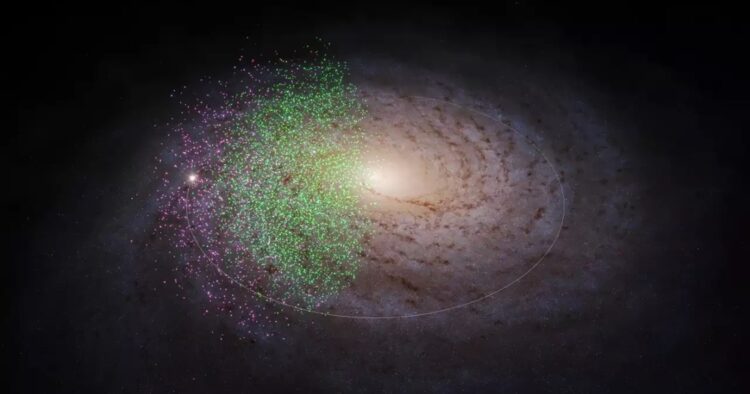Astronomers have made a remarkable discovery using the Gaia space telescope, operated by the European Space Agency. They have identified two streams of stars within the Milky Way, dating back to its early formation around 12 billion years ago. These streams, named Shakti and Shiva after Hindu deities, provide crucial insights into how our galaxy came into being.
Shakti and Shiva are believed to be remnants of galaxies that merged with the Milky Way during its infancy. These structures are comprised of stars with similar chemical compositions, suggesting they formed roughly 12-13 billion years ago. Each stream contains stars with a mass about 10 million times greater than our sun.
The significance of naming these streams after Hindu deities lies in their mythological context. In Hinduism, the union between Shiva and Shakti is said to have given rise to the cosmos. Similarly, the discovery of Shakti and Shiva structures helps scientists understand the turbulent early stages of the Milky Way’s formation.
Lead researcher Khyati Malhan of the Max Planck Institute for Astronomy explains that this study addresses a fundamental question in astrophysics: how do galaxies form? By identifying these ancient star structures, scientists gain insights into the Milky Way’s initial stages of formation, possibly marking the last event before its disk formation began.
The Gaia space telescope, launched in 2013, has been instrumental in this discovery. It is assembling the most precise three-dimensional map of the Milky Way, providing invaluable data on the positions, distances, and motions of stars. With Gaia’s help, researchers detected the presence of Shakti and Shiva through shared properties among their stars.
These ancient star streams, Shakti and Shiva, are located within approximately 30,000 light years of the galactic center. Shiva’s stars are slightly closer to the center compared to Shakti’s. Their composition sets them apart from most other stars in the Milky Way, being “metal-poor,” meaning they contain lesser amounts of heavier elements like iron, carbon, and oxygen.
This discovery builds upon previous findings, such as the identification of the “poor old heart” of the Milky Way in 2022, another population of stars dating back to the galaxy’s earliest history and situated within the galactic core. Together, these discoveries contribute to our understanding of the Milky Way’s formation and evolution.
While our understanding of the Milky Way’s early phases remains broad, future surveys by Gaia and other instruments promise to unveil more about its intricate journey from its inception to the present day. By studying these ancient star streams, astronomers hope to piece together the 13-billion-year-long saga of our galaxy’s formation and evolution.

















Comments